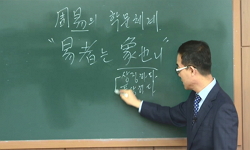이 논문은 프랑스의 폴 리처드(Paul Richard, 1874~1967)가 戰後에 출간한 저서 및 전기에 나타난 그의 태양 중심 사유 및 신토 이데올로기가 보편적인 우주적 사유로 확장되는 방식을 살펴본다. 또...
http://chineseinput.net/에서 pinyin(병음)방식으로 중국어를 변환할 수 있습니다.
변환된 중국어를 복사하여 사용하시면 됩니다.
- 中文 을 입력하시려면 zhongwen을 입력하시고 space를누르시면됩니다.
- 北京 을 입력하시려면 beijing을 입력하시고 space를 누르시면 됩니다.

일체 담론과 재제국화 ― 戰後 폴 리처드의 태양 상징과 우주적 의식 = Universalizing Shintoism: Deified Time and “Cosmic Consciousness” in Paul Richard’s Work
한글로보기https://www.riss.kr/link?id=A108899468
- 저자
- 발행기관
- 학술지명
- 권호사항
-
발행연도
2023
-
작성언어
-
-
주제어
음양 ; 상보성 ; 범아시아주의 ; 신토주의 ; 우주적 의식 ; yin-yang ; complementarity ; Pan-Asianism ; Shintoism ; Cosmic Consciousness
-
KDC
900
-
등재정보
KCI등재
-
자료형태
학술저널
-
수록면
257-276(20쪽)
- 제공처
-
0
상세조회 -
0
다운로드
부가정보
국문 초록 (Abstract)
이 논문은 프랑스의 폴 리처드(Paul Richard, 1874~1967)가 戰後에 출간한 저서 및 전기에 나타난 그의 태양 중심 사유 및 신토 이데올로기가 보편적인 우주적 사유로 확장되는 방식을 살펴본다. 또한 크라머가 “유럽에서 온 반세속주의자, 범아시아주의자”라고 부른 리처드가 1960년대 과학을 적극 활용하고 과거로부터 온 미래를 구축하여 신토주의를 보편화하는 방식을 탐색한다. 먼저 리처드의 종교적 다원주의가 아동기 때의 영적 체험 및 프랑스 바하이 신앙의 수장 압둘 바하와의 교류에서 비롯되었음을 논한다. 본고는 태양 상징의 심층 함의, 신토 중심의 일체 담론 재생산 기제 및 과거에기반한 현재 시간의 신격화 과정을 분석한다. 아동기 무한대에 대한 체험에서 출발하여 음양 사상으로 아시아 공통의 사유를 구성함으로써, 이 양극적 일체가 신토주의를 보편화하는 근거로 작용함을 밝힌다. 리처드는 아인슈타인의 ‘우주적 종교’ 개념을 활용하여 ‘우주적 의식’을 제안하였고, 이는 신토주의를 정당화하는 근거가 되었다. 이 논문은 리처드의 ‘우주적 의식’ 개념이 (유사)과학에 기대어 실제로 일본의 지배 이데올로기 재생산에 기여하고 있음을 제시한다.
다국어 초록 (Multilingual Abstract)
Based on close readings of Paul Richard’s writing on Japan after World War Ⅱ and his autobiography, this paper explores the ways in which Richard, defined by Kramer as an “anti-secularist pan Asianist from Europe,” constructed a past-driven ti...
Based on close readings of Paul Richard’s writing on Japan after World War Ⅱ and his autobiography, this paper explores the ways in which Richard, defined by Kramer as an “anti-secularist pan Asianist from Europe,” constructed a past-driven time, a future from the past, to universalize Shintoism in the 1960s. This study first addresses the origins and complexity of Richard’s religious syncretism dating back to his spiritual experience in childhood as well as his encounter with Abdul Baha, the head of the Baha'i faith in France. Richard’s focus on the sun as a deity through analogies and experience of the infinite served as an underlying rationale that was integral to the formation of Asian thought and (biopolar) oneness for universalizing Shintoism. Moreover, this study shows that Richard drew from Einstein’s idea of “cosmic religion” to develop his notion of “cosmic consciousness” as a justification for Shintoism. Finally, this paper suggests that Richard’s cosmic consciousness, bolstered by (quasi) science, actually led to the recirculation of Japan’s imperial ideology.
동일학술지(권/호) 다른 논문
-
‘一再VP’, ‘再三VP’, ‘屢次VP’의 공기구문 분석 ― 다중 구별적 공기어휘 분석
- 한국중국학회
- 이은경 ( Lee Eun Kyoung )
- 2023
- KCI등재
-
마인드맵 활동이 사고력에 미치는 영향 연구 ― K대학 교양중국어 수업 사례를 중심으로
- 한국중국학회
- 이영월 ( Lee Young-wol )
- 2023
- KCI등재
-
古代漢語使動句的韓譯敎學方法硏究 ― 以句型和事件義配合的圖表化爲例
- 한국중국학회
- 金琮鎬 ( Kim Jong-ho )
- 2023
- KCI등재
-
試論兒童靑少年『史記』譯本中存在的相關問題 ― 以飜譯目的、注釋、誤譯爲中心
- 한국중국학회
- 陳秀偉 ( Chen Xiuwei )
- 2023
- KCI등재




 KCI
KCI KISS
KISS





